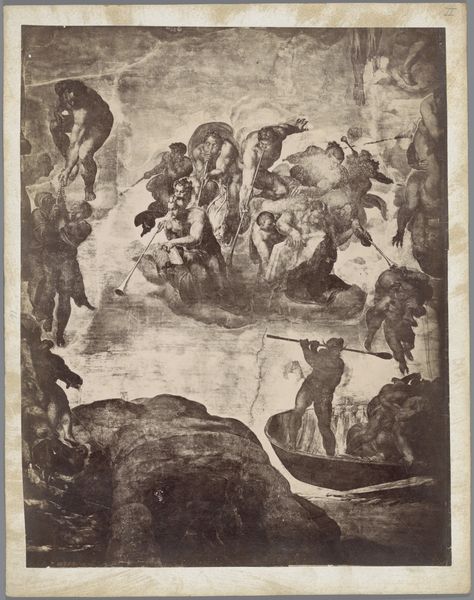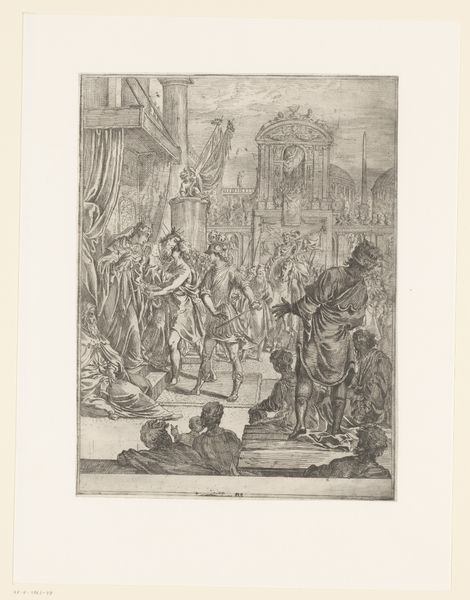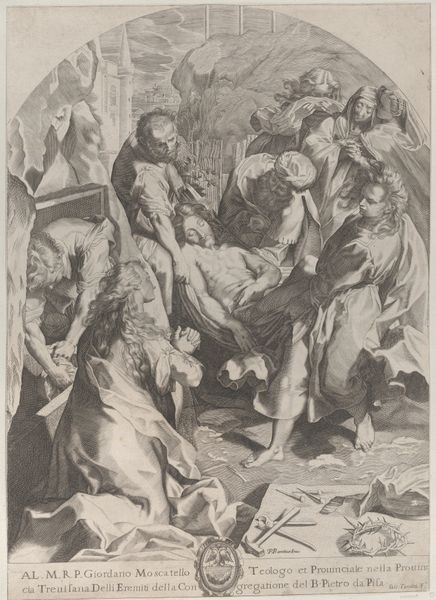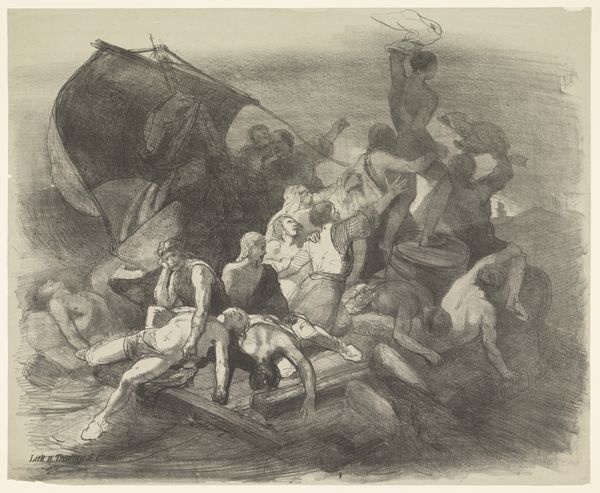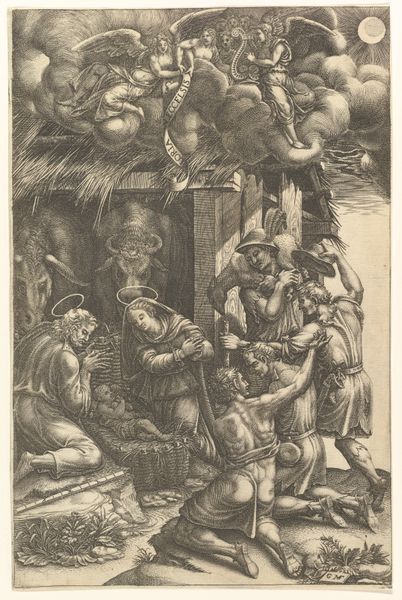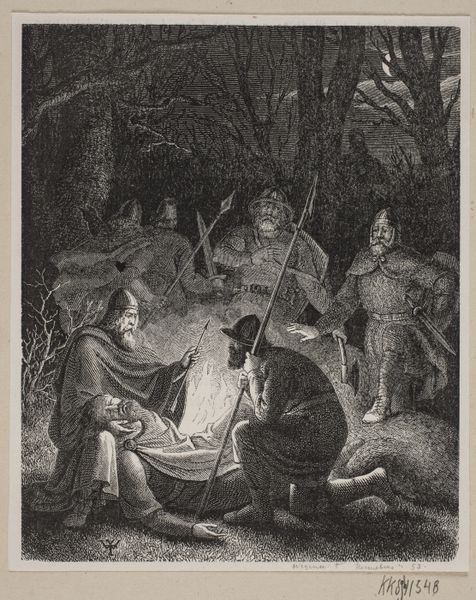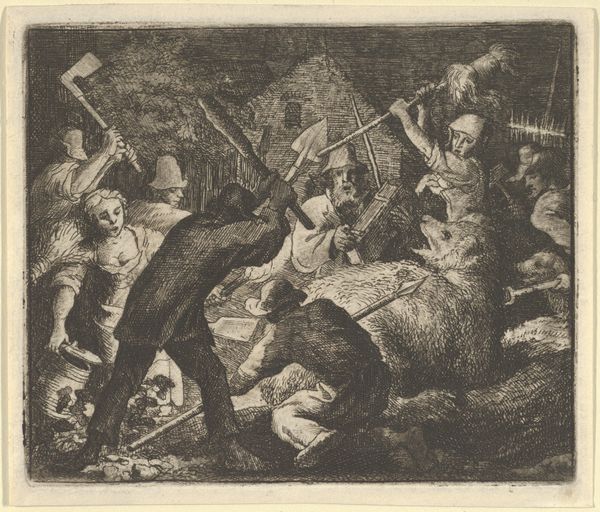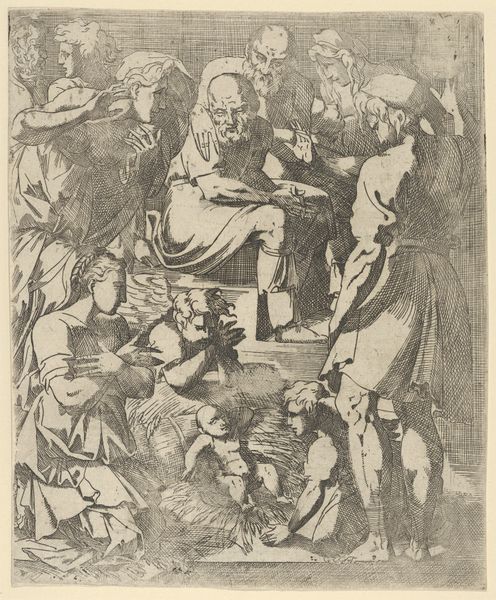
Elend, from the series Vom Tode Zweiter Teil 1870 - 1920
0:00
0:00
drawing, print, etching, engraving
#
drawing
#
narrative-art
# print
#
etching
#
german-expressionism
#
figuration
#
men
#
symbolism
#
history-painting
#
engraving
Dimensions: Plate: 17 7/8 × 13 13/16 in. (45.4 × 35.1 cm) Sheet: 22 in. × 15 15/16 in. (55.9 × 40.5 cm)
Copyright: Public Domain
Curator: Max Klinger’s unsettling print, "Elend, from the series Vom Tode Zweiter Teil," dating from 1870 to 1920, depicts a scene of misery. What strikes you first about it? Editor: The stark contrast and overall gloominess immediately set a somber mood. The figures seem trapped, weighed down by…something heavy. Curator: Klinger employed etching and engraving to create this effect. Consider the material process: the labor involved in meticulously carving these lines into a metal plate to reproduce such a dense image. What does this labor tell us about the artist's intention, and perhaps even the socio-economic conditions under which he was producing art? Editor: The intense cross-hatching definitely builds tonal depth, enhancing the drama, doesn't it? Notice how it sculpts the faces, emphasizing the despair, and how the lines converge, drawing the eye. It's about using form to convey the inner turmoil. Curator: Precisely. But it's also crucial to look beyond mere form to its societal impact. These prints, accessible and reproducible, allowed Klinger to disseminate his social commentary widely, engaging a broad audience in reflecting on death, poverty, and existential anxieties pervasive across society at that time. Editor: But to ignore composition entirely would be a mistake! Klinger skillfully organizes figures to lead your eye to different areas. Observe the placement of the hunter-like figure in the foreground. Curator: Absolutely. The material reality and historical context surrounding Klinger’s creation influence the imagery's purpose and reception within the art world. He transforms craft into a powerful statement of socio-political concern. Editor: And, his mastery of form renders this commentary potent and poignant for any audience. It presents an example of symbolism through expertly placed elements to create striking effects that remain timeless and deeply felt. Curator: Studying its place in history, production method, and how it touched people from all backgrounds shows just how impactful this piece still remains today. Editor: Yes. It speaks of timeless sorrow—a perfect visual narrative of loss rendered through exquisite design.
Comments
No comments
Be the first to comment and join the conversation on the ultimate creative platform.

